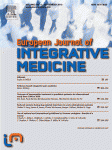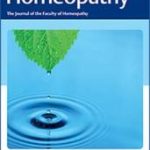Heather Boon, Hugh MacPherson and Nicola Robinson
Recent research shows maturity in addressing safety issues associated with CAM therapies
Eur J Integr Med, 2014, 6 (4), 401-403

Complementary and alternative medicine (CAM) or integrative medicine (IM) is defined in various ways by many different groups. The most âofficialâ? definitions describe CAM in terms of its relationship with the dominant health care system (e.g., http://nccam.nih.gov/health/whatiscam) and integrative medicine as the evidence-informed blending of CAM and conventional medicine (e.g., http://www.imconsortium.org/about/home.html), but patients often describe CAM as being natural and safe options for managing a wide variety of health conditions [1], [2] and [3]. Yet as we all know, being natural does not necessarily mean something is safe â some very potent toxins are naturally found in mushrooms, snake venom and berries. Similarly, if a natural product or CAM therapy is expected to have some effect in the human body, it is reasonable to expect that an effect may also cause unwanted consequences for some cases depending on the genetic make-up of the patient, the patient's underlying condition, the dose of the product or therapy, other products and therapies the patient may be using concurrently and/or the quality of product or skill of the practitioner. Patients and practitioners both need accurate and relevant data regarding any risks, just as much as they need data regarding efficacy in order to make informed decisions about CAM products and therapies.This Special Issue of the Journal focuses on safety issues related to CAM products and therapies. While many resources are focused on exploring what works (or does not work), there are equally important questions regarding safety, which are often less prominent in research. There are a number of reasons for this. One is that doing research on the risks associated with a treatment is quite challenging. Although most clinical trials do collect data on adverse events experienced by patients in the trial, the sample sizes in effectiveness or efficacy trials are almost always too small to be able to identify the majority of adverse events. Similarly, clinical trials generally include only patients who are not taking other medications and have no co-morbidities. In the real world, patients are often more complex than those taking part in clinical trials and thus more likely to have different kinds of reactions to treatments. So, adverse events are often identified only when large numbers of patients use treatments as they normally would in the real world.




